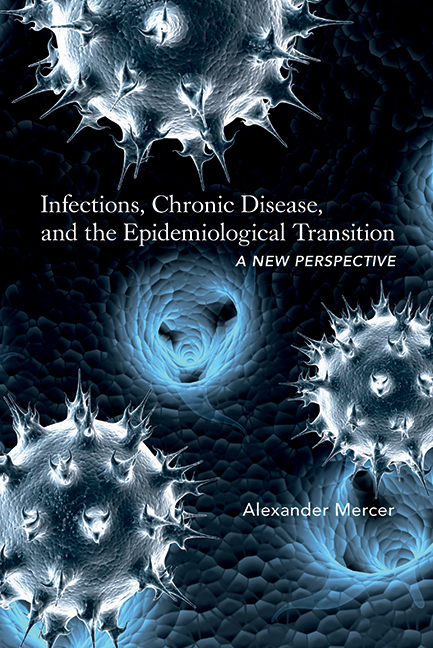Book contents
- Frontmatter
- Dedication
- Contents
- Preface
- Acknowledgments
- Introduction
- 1 Background
- 2 Theoretical Framework, Data, and Study Outline: The Concept of Epidemiological Transition
- 3 A New Infectious Disease Environment
- 4 Mortality Decline, Food, and Population Growth: “Standard of Living” and Nutrition
- 5 Smallpox
- 6 Typhus, Typhoid, Cholera, Diarrhea, and Dysentery
- 7 Infant Mortality
- 8 Child Mortality
- 9 Tuberculosis
- 10 Respiratory Diseases
- 11 Cardiovascular Disease
- 12 Cancer
- 13 Other Chronic Diseases
- 14 Epidemiological Transition: A New Perspective
- Appendixes
5 - Smallpox
Published online by Cambridge University Press: 14 March 2018
- Frontmatter
- Dedication
- Contents
- Preface
- Acknowledgments
- Introduction
- 1 Background
- 2 Theoretical Framework, Data, and Study Outline: The Concept of Epidemiological Transition
- 3 A New Infectious Disease Environment
- 4 Mortality Decline, Food, and Population Growth: “Standard of Living” and Nutrition
- 5 Smallpox
- 6 Typhus, Typhoid, Cholera, Diarrhea, and Dysentery
- 7 Infant Mortality
- 8 Child Mortality
- 9 Tuberculosis
- 10 Respiratory Diseases
- 11 Cardiovascular Disease
- 12 Cancer
- 13 Other Chronic Diseases
- 14 Epidemiological Transition: A New Perspective
- Appendixes
Summary
The mortality decline in England between the mid-18th and the mid-19th century does not appear to have coincided with any consistent improvement in the economic standard of living, and there is no convincing evidence of a significant improvement in diet and nutrition that could have increased resistance to the major infectious diseases. The pattern of cause of death in England and other parts of Europe in the 18th century was characterized by severe infectious diseases such as smallpox, typhus, typhoid, dysentery, and tuberculosis. Although plague caused a dramatic reduction in population in the 14th century, and periodically massive mortality until the 1660s, the recession of the disease did not result in more rapid population growth. By the end of the 17th century in England and other European countries, epidemics of smallpox had become a much more regular cause of high mortality checking population growth, and many towns would not have grown much without in-migration. Data from towns in the British Isles and from Sweden and Finland presented by Razzell indicate 8–20% of all deaths were directly attributed to smallpox in the first half of the 18th century (table 5.1).
With the growth of towns, the number and concentration of people who had not previously been infected with smallpox (“new susceptibles”) reached levels that allowed the virus to maintain a presence in England. Smallpox predominated in a competitive environment in which microorganisms required human hosts in which to replicate. There are likely to have been different strains of the smallpox virus, which differed in virulence, although those who survived infection with any of these strains would usually have gained lifelong immunity to the disease. Variola major would have been highly destructive of life even without intercurrent infections or under-nutrition. Different infectious diseases had different epidemic cycles, and the cycle of smallpox epidemics would have been linked with sociodemographic factors such population size and the number of “new susceptibles” who had no immunity.
The immunity gained by those who survived infection resulted in smallpox becoming predominantly a disease of childhood in the towns of England in the 18th century. The smallpox censuses in the 1720s compiled by Jurin were based on reports of epidemics by medical practitioners in thirty-two areas, and these indicate a case fatality of 17% overall and 24% in six rural areas.
- Type
- Chapter
- Information
- Infections, Chronic Disease, and the Epidemiological TransitionA New Perspective, pp. 58 - 76Publisher: Boydell & BrewerPrint publication year: 2014

